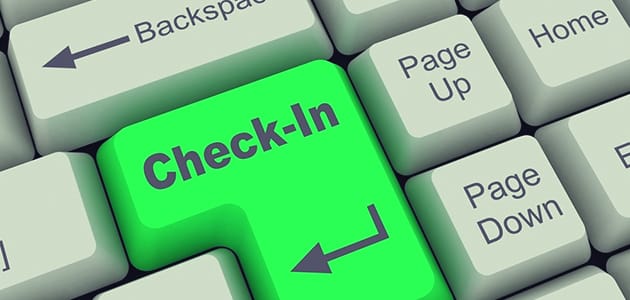Mastermind Agenda –
The difference between success
and failure
Mastermind Don’t Work

A Mastermind agenda is very important if you want to run a mastermind. It doesn’t work unless there is a structure to follow. Which Mastermind agenda you choose is nowhere near as important as ensuring that you do have some kind of agenda in place. The framework ensures equal contribution and participation. Remember this is a Mastermind and NOT a coaching session.
Your mastermind agenda also ensures maximum efficiency and time management. The whole group all need some input and support to ensure that they gain maximum value. You don’t start a car journey without a destination or a map and you can’t run a successful mastermind group without an agenda or desired outcome. Below is a summary of how many masterminds are structured. This is a guideline only on some of the most popular components in successful Masterminds.
Mastermind Group Agenda

How long should each Mastermind session run? This can depend on how frequently you meet and how many are in the Mastermind group. The bigger the group the more time will be required to ensure everyone gets an equal amount of time to speak. The difficult of large groups is that you will need to split them up to ensure that they don’t have to wait too long and listen to too many people talk about their issues (and try and remember all this information) before their turn. You then lose any kind of advantage of a large group because they have to be broken up anyway.
If you have a smaller group that meets regularly consider approx 60 to 90 minutes as the ideal time for the session agenda, however, if you only meet once per month or even quarter then between 3 hours and a full day may work best.
Check-in

We believe that every meeting should start with a “check-in”. This is a simple yet highly effective way to both communicate where you are emotionally and allows you to list 1 thing you are grateful for. It gives everyone else at the meeting an instant snapshot of both your energy levels and your emotional level. Plus the gratitude aspect allows them to both know a tiny bit about you (making it a little more personal), and an insight into what motivates you. All in just 10 seconds.
When you know all this why would you NOT use the check-in process at the start of each mastermind? Still not sure? Here is a quick example to help you see what it would look like.
Mastermind attendee #1 – “Today I am 8.5 out of 10. 1 thing I am grateful for is the advice I got last week when I was particularly stuck on my marketing plan”
What this tells us is:
- 8.5 Out of 10 is pretty good. This person is positive today, potentially has lots of energy and is in a good and receptive mood.
- Grateful for the advice. This tells the group that they valued the help and advice they received. Maybe they didn’t get the chance to tell everyone yet but now they have acknowledged that the help they got was both appreciated and useful. Gratitude is complex as it’s an emotion, a feeling, and can also be a personality trait. It’s something that we all should work on, almost like a learned skill or habit and it becomes a great trait with practice.
Group Update

Depending on the size of the group it is important to try and arrange an update from everyone. Each member should have accomplished something since the previous meeting. It’s important to include ALL the group in each mastermind session. If the group is around 8 (the optimum size for an online mastermind) then having a 2-3 minute “whip round” for everyone will still take between 16 – 24 minutes. So it’s important to prep in advance for this if you intend using this feature in your mastermind agenda.
Preparation enables everyone to succinctly tell their summary. What wins challenges, roadblocks and any lessons learned since the last meeting. but also stay within the allotted time. Without this, you chew up big chunks of valuable time with participants trying to remember what they did, or what they committed to achieve (goal setting). There is a real danger that the allocated time runs over and you don’t get to complete your mastermind agenda.
Hot Seat

The mastermind hot seat could be anywhere from 1 person up to 3 people, depending on how long your Mastermind is scheduled to run for and the size of the group. In a small mastermind group of 3, you could run 3 X 15-minute slots.
Each hot seat session would be rotated between each person. In larger groups it will be different. Unless you choose an agenda that runs for 90 minutes or longer, you won’t have the time to address more than 1 persons’ needs in this more detailed format.
Unsure of how to instigate the hot seat? Try one of these 4 sentences to enable to the person in the seat to either explain the challenges they may be facing or kick start a dialogue:hot seats and dig deeper into the issues everyone is facing. In larger groups is different. Unless you choose an agenda that runs for 90 minutes or longer, you won’t have the time to address more than 1 persons’ needs in this more detailed format.
- The actions I’ve taken are ….
- I’m feeling….
- My question is ….
- I’m having problems with ….
Hot Seats Works Best When Scheduled

The hot seat works best when scheduled in advance by having a fixed rota. This enables time to do some preparation and know what topic or question to ask of the other members. Plus, what outcomes they would like to achieve or even to clarify the issues they are facing. The rest of the mastermind group can also prep their answers and thoughts so that they don’t have to think up questions on the spot.
The hot seat participant must be willing to open up and be a little vulnerable, honest and forthright. They also must be prepared for answers or suggestions that they may not agree with, like or even believe in. But, this is EXACTLY where the true value in mastermind groups lie. You can download our free mastermind hot seat allocation worksheet.
Goals & Objectives
No great Mastermind meeting agenda would be complete without the tracking of goals and objectives. It’s one thing to state to your tribe your intentions and what you want to achieve. But the value is with the accountability of reviewing the goals you set and making sure that you actually achieved them. We can’t stress this often enough – your goals need to be S.M.A.R.T and it’s worth reviewing our epic blog on vision and goal setting to ensure that you are working toward the right goals.
Open Floor

Anyone that is not a huge fan of structure can incorporate some kind of open floor into their agenda. This will appease the free thinkers or those that work better with fewer constraints. This is a chance to discuss anything and everything. Maybe it’s something that came up in the current Mastermind or an idea that’s been percolating for some time.
If you intend to run an open floor you may still need a few starter questions (structure again). Get the ball rolling and get people talking and interacting. Depending on the level of expertise in the Mastermind group this could be a few “on topic” deep questions or a basic conversation starter with a Why, What, Who, How, When……
Remember that you still need to allocate a start/end time for this segment and keep an eye on the timing.
Guest Expert or Presentation

Adding a guest expert or a presentation is a great way of changing up your formats and creating some diversity within your mastermind group. Your guest expert needs to be knowledgeable AND have a great presenting style (they don’t always come hand in hand). They also need to know the difference between presenting vs selling/pitching their services. Too often we see presenters that are too focused on the latter.
If the information is of enough interest to your audience they will naturally seek out the presenter for either more information or a request to work with them. Presenters should ensure that they use the allotted time to provide maximum value without expectation.
We have only scratched the surface when it comes to listing the possible Mastermind agenda and you are only limited by your imagination as to how you can make your Masterminds fun, relevant and enjoyable for everyone involved.
The key message we want convey is that the mastermind agenda is the glue that binds it all together. It keeps the flow happening and allows everyone to feel comfortable. Knowing the mastermind agenda and the purpose of the meeting creates better outcomes and therefore a more successful Mastermind group.
If you are serious about running your online meetings then it’s a good idea to get a guide to help you set your own mastermind agenda. Do you have a different Mastermind agenda that we have not covered? We are always learning and would be happy to add your format to our comprehensive list – just contact us and we will update our post.
